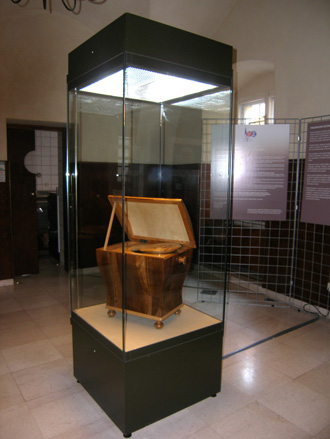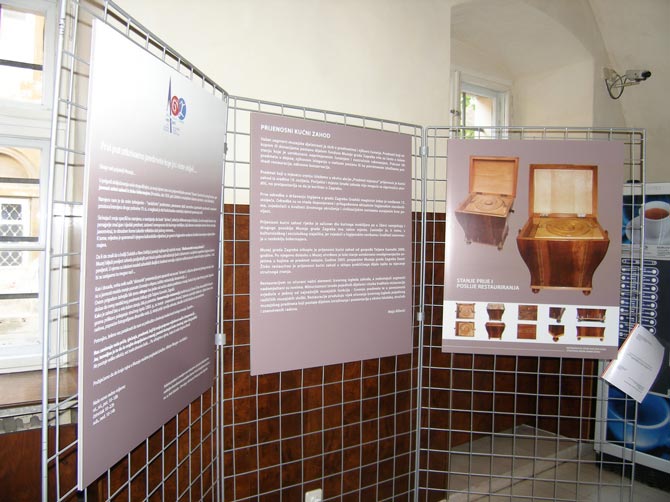A portable household lavatory
An exhibition within the “Object of the Month” campaign on the occasion of the centennial of Zagreb City Museum
Exhibition concept: Maja Alilović
 An important part of the activity of a museum is the care and preservation of objects. Items that become part of the holdings of Zagreb City Museum through purchases or donations are very frequently in a poor state, resulting from inappropriate keeping and inexpert handling. Hence the storage of these objects in the stores, their exhibition in the permanent display or at some occasional exhibition must be preceded by restoration and/or conservation.
An important part of the activity of a museum is the care and preservation of objects. Items that become part of the holdings of Zagreb City Museum through purchases or donations are very frequently in a poor state, resulting from inappropriate keeping and inexpert handling. Hence the storage of these objects in the stores, their exhibition in the permanent display or at some occasional exhibition must be preceded by restoration and/or conservation.
The object that we are showing in July as part of the “Object of the Month” campaign is a portable household toilet of the mid-19th century. The origin of the toilet and where it was made cannot be determined with any certainty, but it is assumed to have been used in Zagreb.
The first ordinances concerning the maintenance of hygiene in the city of Zagreb was issued by the municipal authorities, called the magistracy, in the 15th century. After that the provisions were brought up to date and adjusted to current criteria for hygiene, telling of the quality of amenities and the norms of civilisation adopted through the course of history.
A portable household lavatory is a rarely preserved part of the furnishings of a household and hence in the collection of furnishings and other household effects in Zagreb City Museum it has an important place. It's interesting, furthermore, from the point of view of culture and sociology, telling as it does of the amenities and the habits of personal hygiene of the Biedermeier period.
Zagreb City Museum purchased the portable lavatory from Mrs Tatjana Gamulin in 2000. It was determined, after its arrival in the museum, to be in poor condition, because of the inappropriate conditions in which it had been located. In 2005, Zagreb City Museum preparator Damir Živko restored the portable household toilet during the practical work of his examination for his professional certification.

The restoration procedure made sure to preserve important elements of the original appearance of the lavatory, and the missing portions of it were replaced with new pieces. The meticulousness of the work of the individual pieces and the high quality of the restoration testifies to one of the most important museum functions – the preservation of objects, and the interlocking working of the different museum departments. Restoration extends the period in which the original appearance of a given museum object can be preserved, enabling it to become an object of investigation and presentation within the framework of exhibitions, review and scholarly papers.
Maja Alilović

